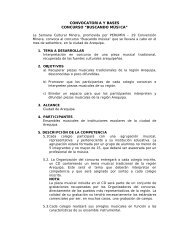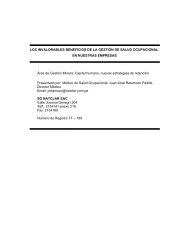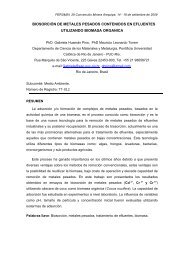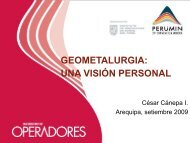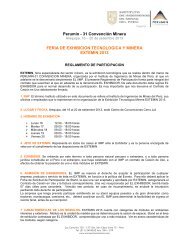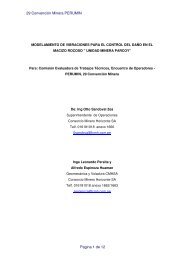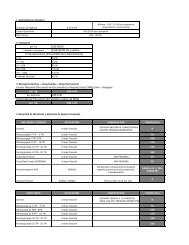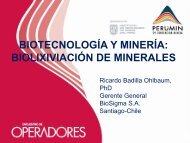Current Developments in the Hydrometallurgical Treatment of ...
Current Developments in the Hydrometallurgical Treatment of ...
Current Developments in the Hydrometallurgical Treatment of ...
Create successful ePaper yourself
Turn your PDF publications into a flip-book with our unique Google optimized e-Paper software.
<strong>Current</strong> <strong>Developments</strong> <strong>in</strong> <strong>the</strong> <strong>Hydrometallurgical</strong><strong>Treatment</strong> <strong>of</strong> Copper Ores and ConcentratesGALVANOX CHEMISTRY‣ Typically, chalcopyrite surfaces are passivated (i.e., <strong>the</strong>ybecome resistant to electrochemical breakdown) <strong>in</strong> ferric sulfatesolutions at even modest solution potential levels.‣ It is widely held that this results from <strong>the</strong> formation <strong>of</strong> some sort<strong>of</strong> passivat<strong>in</strong>g film on <strong>the</strong> m<strong>in</strong>eral surface that most likelyconsists <strong>of</strong> an altered, partially Fe-depleted sulfide layer.‣ Because <strong>of</strong> this, most <strong>in</strong>vestigators have assumed that it is <strong>the</strong>anodic half-cell reaction that limits <strong>the</strong> overall rate <strong>of</strong> leach<strong>in</strong>g.‣ However, we discovered that it is primarily <strong>the</strong> cathodic half-cellreaction (i.e., ferric reduction) that is slow on <strong>the</strong> chalcopyritesurface.



